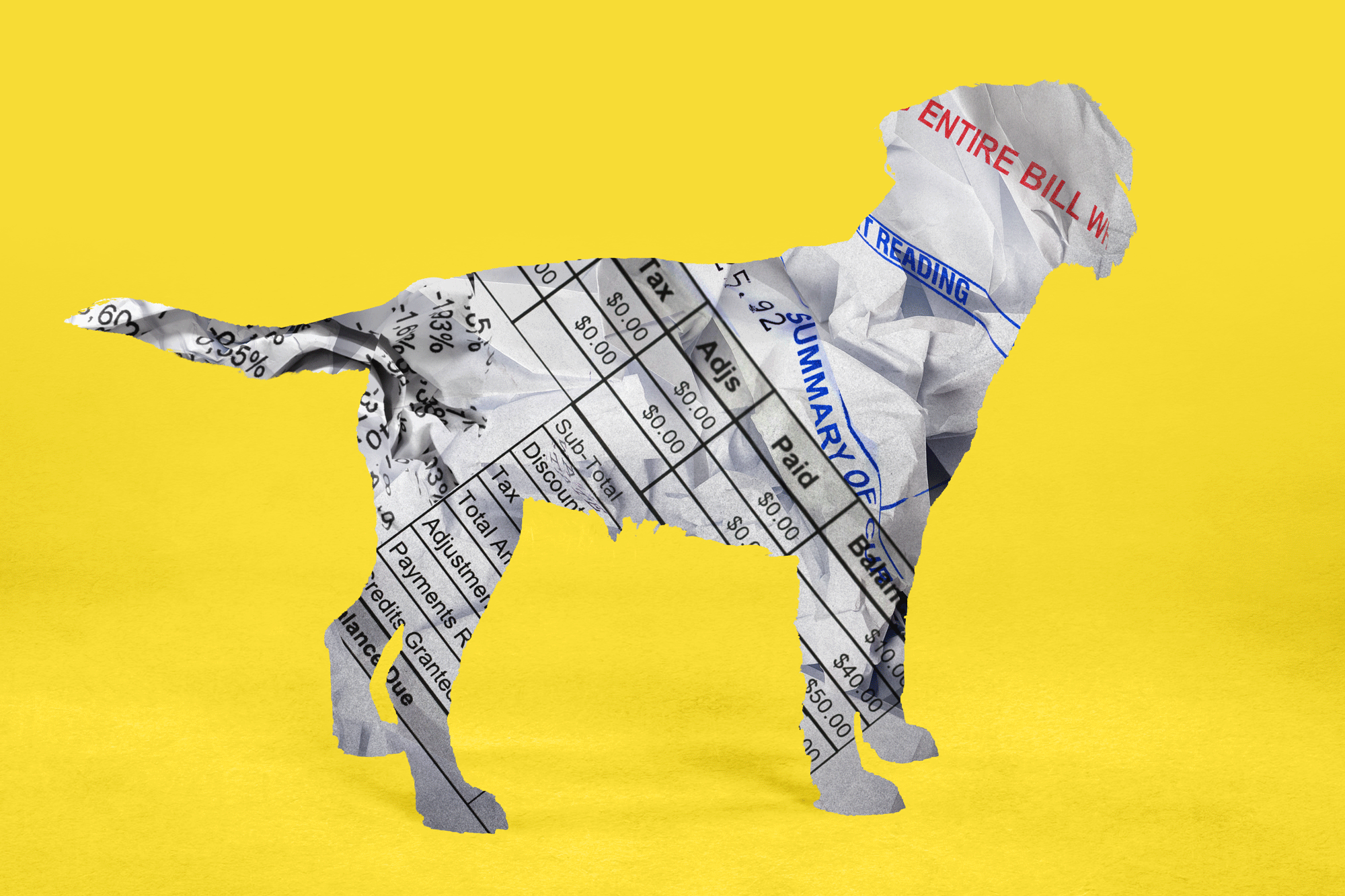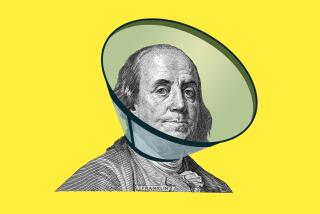More bark for your buck
- Share via
Veterinarian Gregory Hammer laughed as he recalled the average price his clients paid for an office visit in 1973, when he started out in rural Kansas. ¶ “It was $6,” said Hammer, now president of the American Veterinary Medical Assn. ¶ Good luck getting so much as a torn nail clipped for that these days. ¶ Americans spent more than $10 billion on veterinary care last year, according to the American Pet Products Manufacturers Assn. ¶ A single visit to a vet cost an average of $135 for a dog owner as of 2006, the last time the veterinary group took a survey of those costs. That’s up 83% from 10 years earlier. And the price is probably a good bit higher in Southern California, where vet fees are steeper than in most of the country. ¶ Inflation played a major role -- the costs of office space, staff salaries, equipment and supplies have all shot up.
Pet owners are demanding -- and have become accustomed to -- a higher level of care. “Years ago if an animal had a serious cancer,” Hammer said, “someone would say to put him to sleep. Now they want to be referred to an oncologist.”
But one of the biggest contributors to higher consumer costs was a comprehensive veterinary market study issued in 1999 by consulting firm KPMG International.
It found that the profession -- long stuck in attitudes personified by folksy James Herriot books such as “All Things Bright and Beautiful” -- was charging too little. And worse, veterinarians were giving away care for free.
“Opportunities abound,” the executive summary of the study stated, but vets were held back by “inefficient structures, inappropriate business practices and attitudes.”
Many professionals in the field, faced with stagnating incomes, took heed.
“It was a sea change for the veterinary profession,” said Jim Flannagan, marketing director of the trade association. And soon thereafter came sticker shock for clients.
“Even if your pet is perfectly healthy, vets are now ready with a battery of tests, shots and even X-rays for the annual wellness checkup,” Jeff Blyskal, a senior editor at Consumer Reports, said in a controversial 2003 article.
Not all veterinarians take it that far. And as Hammer pointed out, medical care for animals still costs only a tiny fraction of treatments for the same conditions in humans.
But given the relatively scant use of pet insurance, you’re likely to pay the vet’s full bill out of pocket. VPI, the largest company in the pet insurance field, maintains policies on about 450,000 dogs and cats, less than 1% of the 150 million total dogs and cats in the country.
So, here are some tips -- culled from nonprofit animal groups, industry watchdogs and veterinarians themselves -- on how to take the bite out of pet health costs.
* Know your breed. Some breeds are more prone to expensive hereditary ailments. In analyzing data compiled by Purdue University’s Veterinary Medical Database, Consumer Reports found, for example, that hip dysplasia was most commonly found in Labrador retrievers, golden retrievers and German shepherds. (You can read the Consumer Reports article at www.consumerreports.org/Pets.)
* Know your breeder. If you want a purebred, you’re much better off buying in a situation where you can speak directly to the breeder. You want to make sure the animal was not the product of a puppy or cat mill, in which females are kept nearly constantly pregnant to ensure high volume. Not only are these mills inhumane, they’re also breeding grounds for expensive health problems.
* Get a mutt. They’re not nearly as likely to suffer from hereditary conditions. But of course, they can still get sick, and expensively so.
* Get a cat. According to the American Veterinary Medical Assn., cat-only households spent a mean of $244 on veterinary expenses in 2006. Dog-only households spent a mean of $395.
* Use low-cost clinics. Many procedures -- such as spaying and neutering, vaccinations and the insertion of identification chips -- can be done at discount or even free clinics, some of which are government-sponsored. Information often is available at nonprofit shelters.
* Look for vet specials. In-office clinics can offer price breaks on vaccinations, teeth cleanings and other procedures. Also, there are senior citizen discounts and package plans for puppy or kitten care.
* Go online. If a medication is not needed immediately, you can sometimes save money by ordering it online rather than buying at a veterinarian office. Suppliers include Petmed Express ( www.1800petmeds.com), PetCareRx (www.petcarerx.com) and Foster and Smith ( www.drsfostersmith.com).
* Spread out your payments. It doesn’t lower bills, but some veterinarians offer payment plans from CareCredit, a credit company owned by GE Money. One type of plan allows you to make no-interest, monthly payments on an approved schedule. But if you miss a payment, you get slammed with interest charges.
* Comparison shop. Los Angeles resident Aida Akhavan was told that her dog needed surgery that would cost about $5,500. She called numerous veterinary surgeons before finding one who agreed to do the operation for $1,500.
* Ask about alternatives. If your veterinarian suggests an expensive treatment, ask about less costly methods that could also be effective.
* Consider insurance. Because of substantial deductibles and exclusions in pet policies, according to the Consumer Reports study, pet owners might be better off putting what they pay in monthly premiums into a savings account. But coverage could play a major role in covering bills for very expensive conditions.
* Limit tests. Extensive blood tests and other diagnostic tools can be nearly as expensive as the treatments. If a client is not able to pay for a wide range of tests, some veterinarians will offer to proceed based on best guesses. “We make the client sign a waiver saying they understand the risks taken without a full diagnosis,” said veterinarian Sylvia Domotor, who heads a four-doctor practice in Monrovia.
It’s a route she reserves for serious cases.
“Sometimes we have to get creative,” she said, “but I’m not going to let that pet walk out the door untreated.”
More to Read
Inside the business of entertainment
The Wide Shot brings you news, analysis and insights on everything from streaming wars to production — and what it all means for the future.
You may occasionally receive promotional content from the Los Angeles Times.











